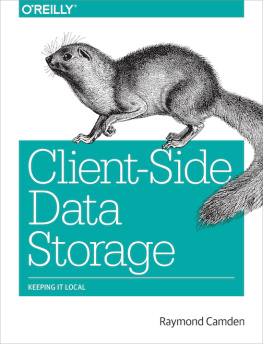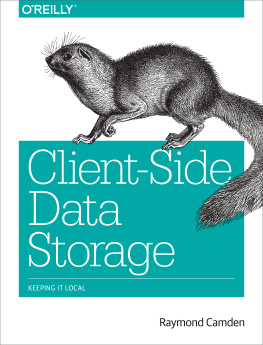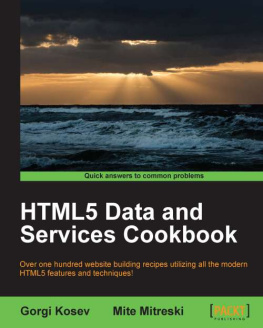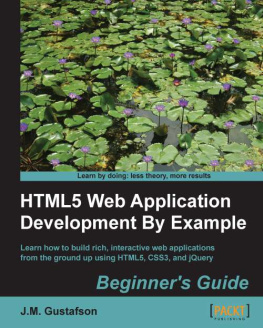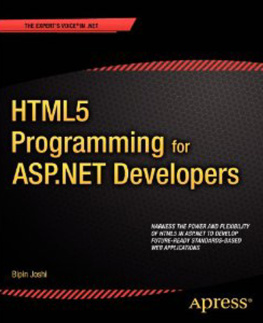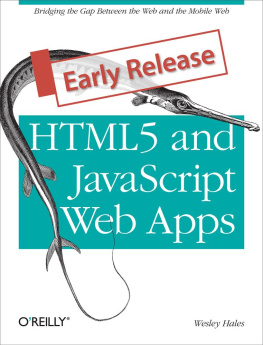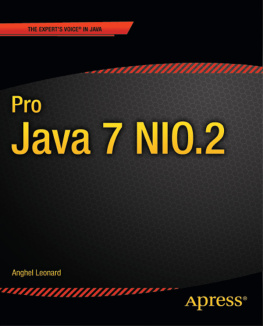Safari Books Online is an on-demand digital library that lets you easily search over 7,500 technology and creative reference books and videos to find the answers you need quickly.
With a subscription, you can read any page and watch any video from our library online. Read books on your cell phone and mobile devices. Access new titles before they are available for print, and get exclusive access to manuscripts in development and post feedback for the authors. Copy and paste code samples, organize your favorites, download chapters, bookmark key sections, create notes, print out pages, and benefit from tons of other time-saving features.
OReilly Media has uploaded this book to the Safari Books Online service. To have full digital access to this book and others on similar topics from OReilly and other publishers, sign up for free at http://my.safaribooksonline.com.
How to Contact Us
Please address comments and questions concerning this book to the publisher:
| OReilly Media, Inc. |
| 1005 Gravenstein Highway North |
| Sebastopol, CA 95472 |
| 800-998-9938 (in the United States or Canada) |
| 707-829-0515 (international or local) |
| 707-829-0104 (fax) |
We have a web page for this book, where we list errata, examples, and any additional information. You can access this page at:
| http://www.oreilly.com/catalog/9781449309459 |
To comment or ask technical questions about this book, send email to:
For more information about our books, courses, conferences, and news, see our website at http://www.oreilly.com.
Find us on Facebook: http://facebook.com/oreilly
Follow us on Twitter: http://twitter.com/oreillymedia
Watch us on YouTube: http://www.youtube.com/oreillymedia
Chapter 1. Introduction
As we move from an offline world to a completely online world, were demanding more from the Web, and more from web applications. Browser implementers are adding richer APIs by the day to support complex use cases. APIs for things like real-time communication, graphics, and client-side (offline) storage.
One area where the Web has lacked for some time is file I/O. Interacting with binary data and organizing that data into a meaningful hierarchy of folders is something desktop software has been capable of for decades. How amazing would it be if web apps could do the same? The lack of true filesystem access has hindered web applications from moving forward. For example, how can a photo gallery work offline without being able to save images locally? The answer is it cant! We need something more powerful.
The HTML5 File API: Directories and System aims to fill this void. The specification defines a means for web applications to read, create, navigate, and write to a sandboxed section of the users local filesystem. The entirety of the Filesystem API can be broken down into a number of different related specifications:
Reading and manipulating files: File/Blob, FileList, FileReader
Creating and writing: BlobBuilder, FileWriter
Directories and filesystem access: DirectoryReader, FileEntry/DirectoryEntry, LocalFileSystem
The specification defines two versions (asynchronous and synchronous) of the same API. The asynchronous API is useful for normal applications and prevents blocking UI actions. The synchronous API is reserved for use in Web Workers.
Use Cases
HTML5 has several storage options available. The Filesystem API is different in that it aims to satisfy client-side storage use cases not well served by databases such as IndexedDB or WebSQL DB. Generally, these are applications that deal with large binary blobs and share data with applications outside of the context of the browser. The specification lists several use cases worth highlighting:


